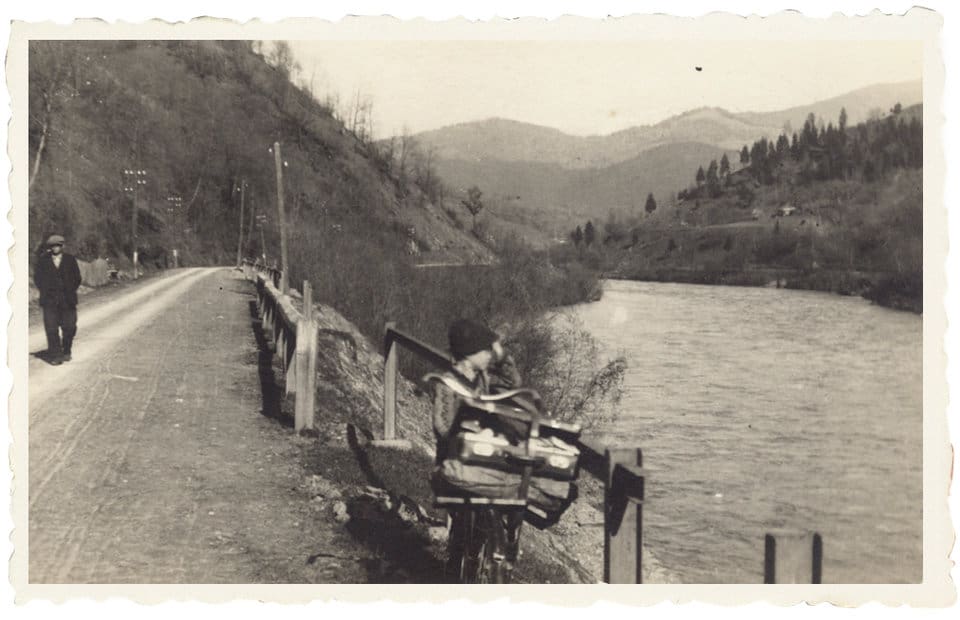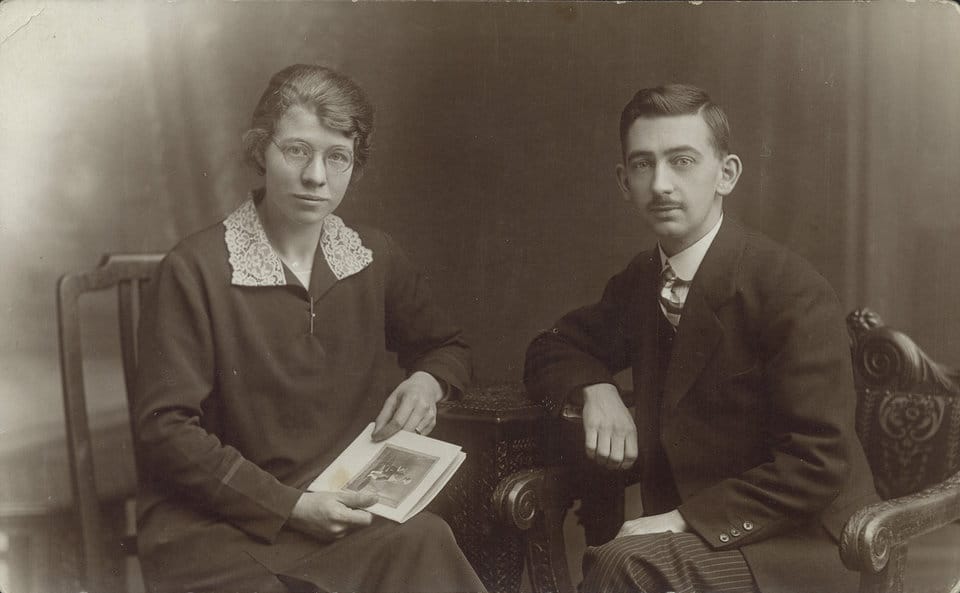1934. A village in the Carpathian Mountains.
Anna* reads from a Russian Bible, her words precise and careful. She is the first person in her village ever to do so—the first person ever to learn to read.
Her guests listen in rapt attention as she tells them of Jesus. She reaches the account of the crucifixion, and many are overcome. They drop to their knees and weep. A dozen men and women turn to Christ, exclaiming their wonder at the love of God.
At that moment, a stranger arrives.
Thirty-four-year-old Stuart K. Hine has been cycling through the mountains for weeks, sharing the good news of the gospel and giving out Bibles.

the Carpathian Mountains
Inspired by the wonder of God’s creation, he is already halfway through composing the words of a song that will one day be sung all over the world. Seeing such a moment of revelation for the people of this village, he writes again.
The Beginning
Stuart once wrote, “The thoughts of the first three verses were born, line by line, amid my unforgettable experiences in the Carpathian Mountains.”
In the first village he reached, Stuart stood in the street and read a chapter from one of the Gospels. But a storm was gathering and he could get no further. The “mighty thunder” echoing through the mountains that night provided the image of God’s power so vividly portrayed in the first verse of ‘How Great Thou Art!’
O LORD my God! When I in awesome wonder
Consider all the works Thy hand hath made;
I see the stars, I hear the mighty thunder,
Thy power throughout the universe displayed…
Stuart eventually crossed the mountain frontier and began to travel through green woods and fresh glades alive with birdsong, where he began writing the second verse.
When through the woods and forest glades I wander
And hear the birds sing sweetly in the trees;
When I look down from lofty mountain grandeur,
And hear the brook, and feel the gentle breeze…
Anna’s Bible
In village after village, Stuart discovered that most of the people living high in the Carpathians knew nothing of God’s gift of grace. He did discover one Bible, though, in the home of a man called Dimitri and his wife, Anna. It had been left behind by a Russian soldier in 1915 when the invading army had to beat a hasty retreat.
For 19 years this Bible had lain unread, until the very year of Stuart’s visit, when Anna had learned to read.
Stuart arrived just in time to hear their guests exclaiming at the revelation of God’s love, prompting him to write the third verse.
And when I think that God, His Son not sparing,
Sent Him to die – I scarce can take it in:
That on the Cross, my burden gladly bearing,
He bled and died to take away my sin…
The Final Chapter

For 14 years, those three verses made up the whole song. But there was one more piece to complete the puzzle.
In 1948, Stuart and his wife Mercy ministered to some of the refugees pouring into the UK from Eastern Europe and Russia. Together they published a Russian magazine called Grace and Peace, perhaps the best message for war-weary souls. The grief and sorrow those refugees expressed at being separated from their loved ones inspired Stuart to begin writing the fourth and final verse of his hymn, full of hope for the future.
When Christ shall come with shout of acclamation
And take me home – what joy shall fill my heart!
Then shall I bow in humble adoration,
And there proclaim, my God how great Thou art!
The Story Continues…
Stuart’s legacy lives on today, enabling more people to know the truth of the gospel. “How Great Thou Art” has been sung from New Zealand to New York, by artists like Elvis Presley and many others.
What’s more, the royalties from their performances—and when you sing it in church—support organizations sharing the good news around the world, including Wycliffe.

Recently this support contributed to a Bible-based songwriting workshop in Ethiopia, where Gamo musicians and singers got together to write some of the very first hymns in their own language.
But they also sang one old song in Gamo, adding their voices to a chorus for the ages . . .
How great thou art! How great thou art!
*Pseudonym. True name unknown.
Source: See original story and additional photos at wycliffe.org.uk
Editor’s note: Since we posted this story, a reader pointed out that Carl Boberg is credited as the original author of this hymn. The following information is posted on hymntime.com:
“In 1885, Swedish preacher Carl G. Boberg wrote the words of a poem entitled O Store Gud. Several years later, Boberg attended a meeting and was surprised to hear his poem being sung to an old Swedish melody.
“In the early 1920s, English missionaries Stuart K. Hine and his wife ministered in Poland. There they learned the Russian version of Boberg’s poem, O Store Gud, coupled with the original Swedish melody.
“Later, Hine wrote original English words and made his own arrangement of the Swedish melody, which became popular and is now known as the hymn, ‘How Great Thou Art.'”
Source: http://www.hymntime.com/tch/htm/h/o/w/g/how_great_Thou_art.htm

